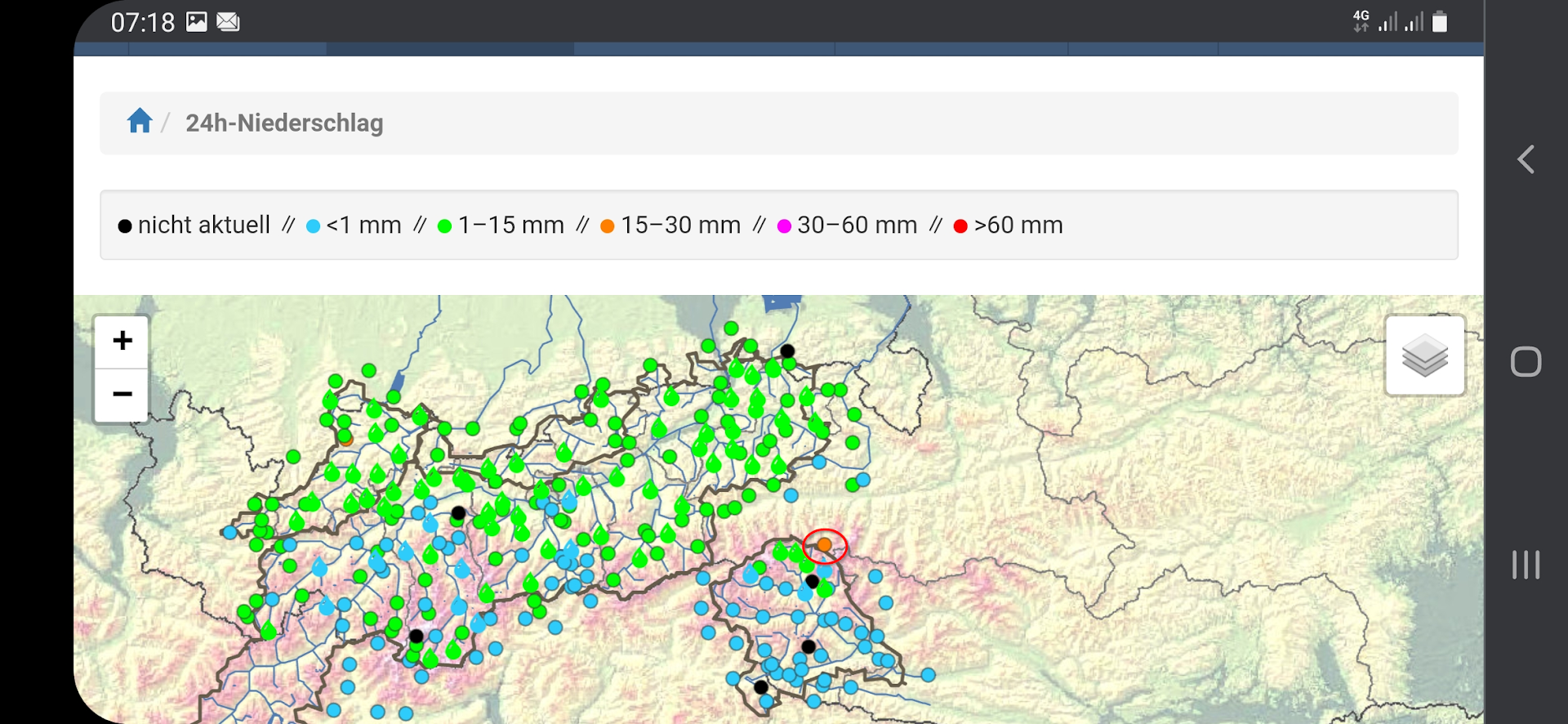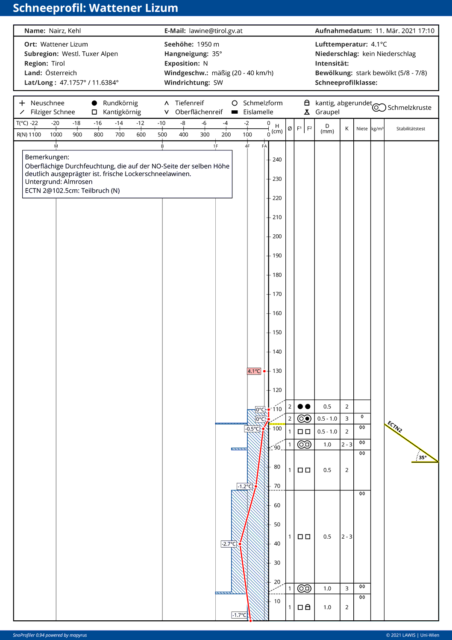Weather review. And a peek ahead.
Last week was variable. A cold front from the northwest brought 10-15 cm of fresh snow widespread in North Tirol and northern East Tirol on Thursday and Friday, 4-5 March. Locally exceptions were startling: in the central Lechtal Alps and Venediger Massif there was 30-50 cm of fresh snow registered.
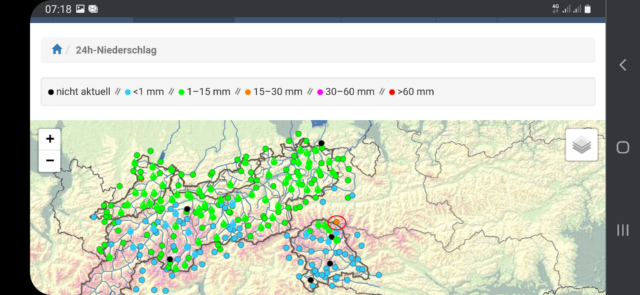 |
| Precipitation on 4-5 March. One of the exceptions: at the high-altitude precipitation station at Rudolfshütte on the East Tirol/Salzburg border |
For the rest of the week, sunshine, clouds and a bit of precipitation took turns at the helm amid lowish temperatures.
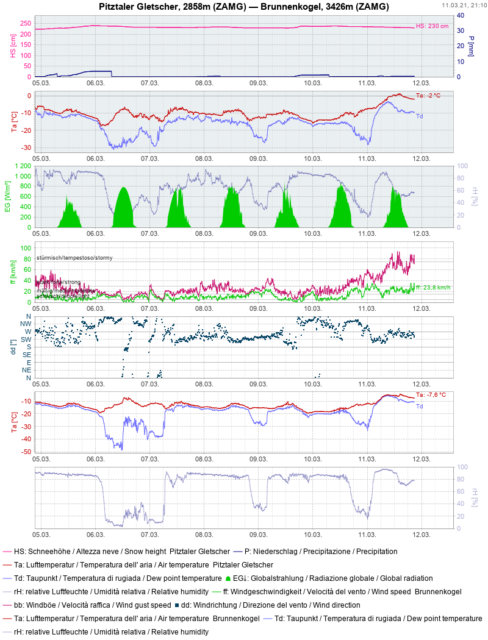 |
| Variable… And now, winds are starkly intensifying at high altitudes. A cold front is on the way. |
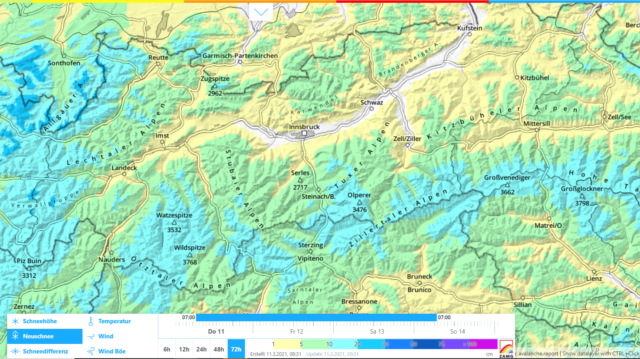 |
| Fresh snow forecast for the next 72 hours (as of 11.03 evening) |
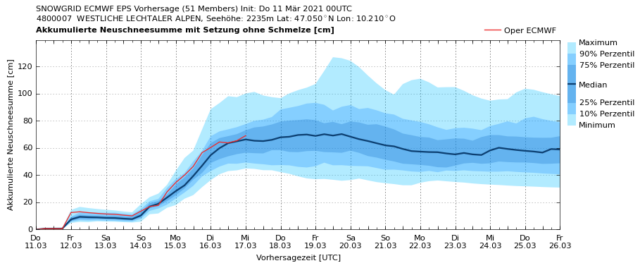 |
| Fresh snow forecast: the first bout starts Thursday evening, the second as of Sunday, 14.03. |
Concentration on weak surface layers. Main problem: fresh snowdrifts.
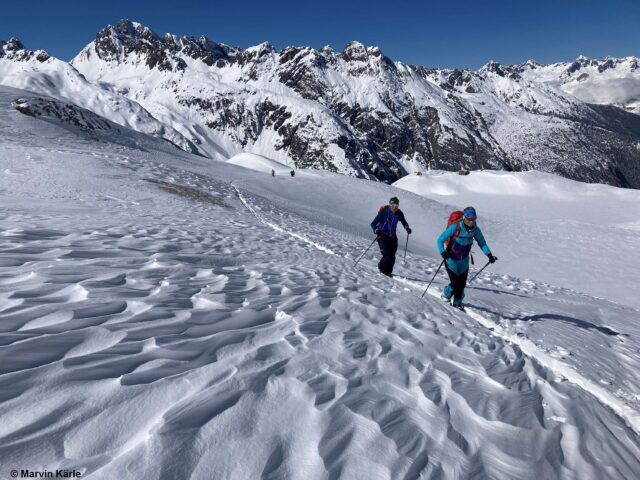 |
| In backcountry, Ausserfern. Wind impact increased with altitude. In steep terrain, caution was imperative. (photo: 06.03.2021) |
For the next few days the basic problem will be the same. Once again, highest attentiveness is required for freshly generated snowdrifts. More and more, the current fresh snow is the potential weak layer, although only where solar radiation has no effect before the next round of snowfall on Sunday, 14 March.
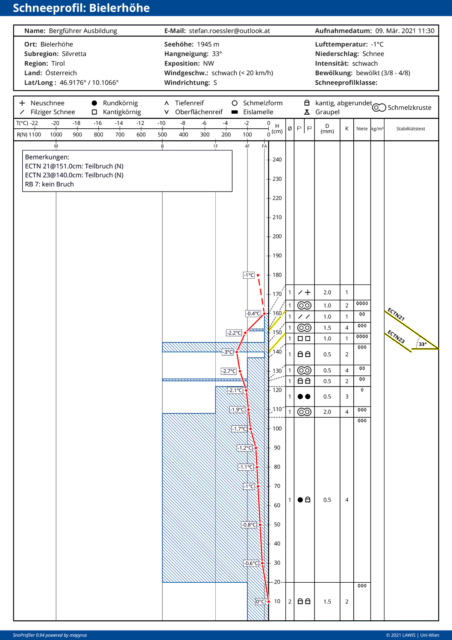 |
| In the uppermost layers, hard and soft layers are stacked together. If fresh snow atop them is massive it could fracture inside the snowpack, particularly at high altitudes on shady slopes. |
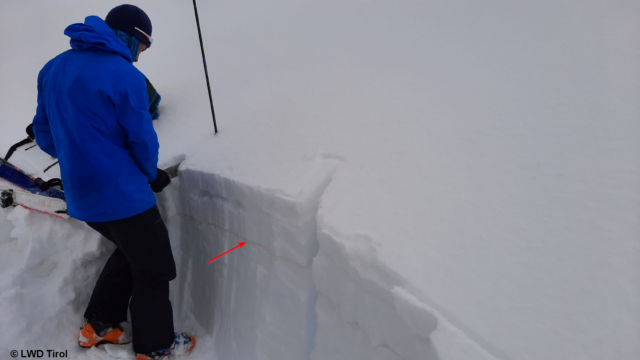 |
| Snowpack analysis in Silvretta. The arrow poings to the layer of Sahara dust from early February. Potential problem zones inside the snowpack lie especially above that point. (photo: 09.03.2021) |
Similar to today (11 March) in the western Tux Alps, in coming days we will observe increasingly frequent loose-snow avalanches on extremely steep slopes. Particularly during the interims between bouts of precipitation when the snowpack surface is moistened by daytime warmth and solar radiation.
